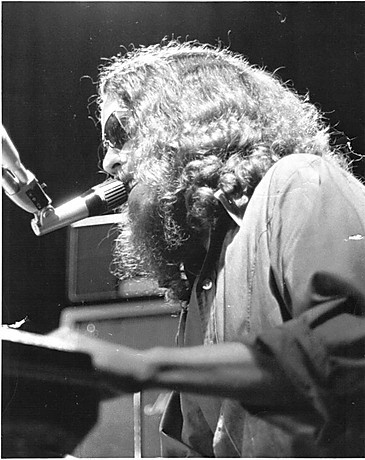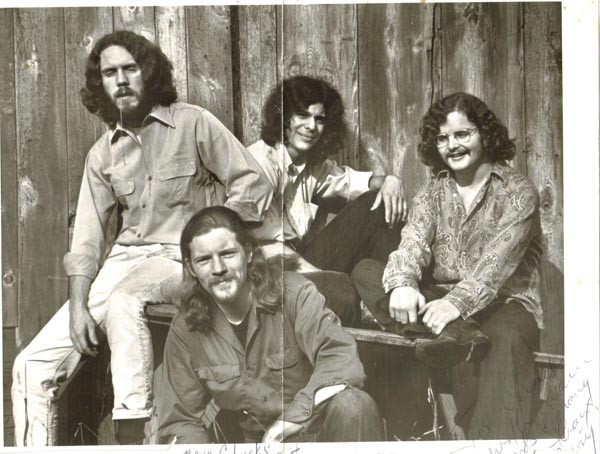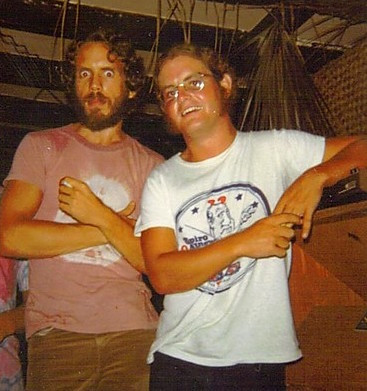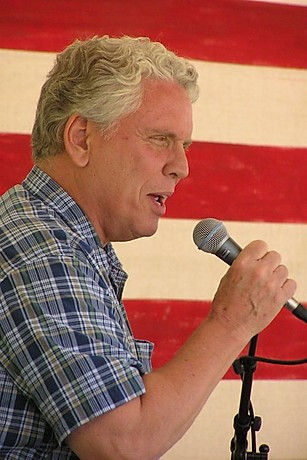“Dancing in the Moonlight” – the very name evokes a feeling of joy, romance, and carefree nights. This iconic song, a staple of feel-good playlists and singalongs, has resonated across generations since its release in the 1970s. But the story behind this seemingly lighthearted tune is surprisingly profound, born from a dark and traumatic experience. Let’s delve into the fascinating journey of “Dancing in the Moonlight” and uncover the inspiration behind its creation.
 Sherman Kelly onstage in the 1970s
Sherman Kelly onstage in the 1970s
From a Night of Terror to a Dream of Joy: The Genesis of “Dancing in the Moonlight”
The song’s writer, Sherman Kelly, never initially intended to pen a cheerful anthem. The origins of “Dancing in the Moonlight” are rooted in a harrowing incident that occurred in 1969 when Kelly was in St. Croix, Virgin Islands. Imagine this: Kelly, running a nightclub in St. Thomas, decided to take a day trip to St. Croix with friends on a yacht. Unfortunately, seasickness struck Kelly and his girlfriend hard during the voyage.
Upon reaching St. Croix, still unwell, Kelly and his girlfriend decided to skip dinner with the group and find a place to stay for the night, hoping to avoid further seasickness on the swaying yacht. However, disaster struck when Kelly realized he had left his wallet on the boat, leaving them penniless. Desperate, they sought lodging at local inns, only to be met with rejection and, shockingly, exploitation.
Facing homelessness for the night, Kelly and his girlfriend made a fateful decision – they would sleep on the beach. What followed was a brutal attack by a street gang. Kelly was severely beaten, and his girlfriend was assaulted. In the face of unimaginable terror, Kelly fought back, eventually scaring off the attackers. Barely conscious, they sought help at a local hospital, unknowingly becoming victims of the notorious Fountain Valley Gang, infamous for later attacks on tourists.
Awakening in the hospital, amidst the grim reality of his injuries and the suffering of another patient, Kelly faced a long road to recovery. Back home in Ithaca, New York, still battling pain and headaches, music seemed a distant prospect. Yet, from this darkness emerged a spark of creativity.
 King Harvest in 1972
King Harvest in 1972
Crafting an Alternate Reality: The Lyrics Take Shape
During his convalescence, confined by his injuries, Sherman Kelly began to write. But instead of dwelling on the trauma, he envisioned an escape. He started writing verses that painted a picture of “an alternate reality, the dream of a peaceful and joyous celebration of life.” This vision became the lyrical foundation for “Dancing in the Moonlight.” The song was born not from a place of blissful experience, but from a yearning for peace and joy in the aftermath of violence. It was a conscious creation of “a better world” than the one he had just endured. This contrast between the song’s upbeat melody and its traumatic origins adds a layer of depth and poignancy to “Dancing in the Moonlight”.
Boffalongo’s Version and Early Recognition
Before King Harvest made it a hit, “Dancing in the Moonlight” had a different beginning. In 1970, Sherman Kelly joined the band Boffalongo, featuring his brother Wells Kelly and future Orleans member Larry Hoppen. Boffalongo recorded “Dancing in the Moonlight” for their album “Beyond Your Head,” with Sherman on lead vocals. However, Kelly candidly admits his vocal performance on this version was far from his best, humorously blaming a misguided attempt by producers to enhance his performance with cocaine. Despite Kelly’s vocal reservations, Boffalongo’s version gained regional popularity, proving the song’s inherent appeal. Another group, High Broom, also recorded it in 1970, but it didn’t chart.
 Boffalongo, circa 1970
Boffalongo, circa 1970
King Harvest Takes “Dancing in the Moonlight” to the Top
The song’s journey to widespread fame took a pivotal turn when Wells Kelly joined King Harvest. He introduced “Dancing in the Moonlight” to the band, and it resonated with them. King Harvest, featuring Doc Robinson on lead vocals, recorded their version, which was released as a single in 1972. This rendition captured the breezy, feel-good essence of the song perfectly. “Dancing in the Moonlight” became a breakout hit for King Harvest, climbing to No. 10 on the Cash Box chart and No. 13 on the Billboard Hot 100. Sherman Kelly even toured with King Harvest during the summer of 1972, witnessing firsthand the song’s growing popularity. While he enjoyed the initial excitement of touring with a hit song, the realities of life on the road quickly lost their appeal for Kelly.
Orleans and the Enduring Legacy of “Dancing in the Moonlight”
The story of “Dancing in the Moonlight” doesn’t end with King Harvest. Wells Kelly later joined forces with John Hall and Larry Hoppen to form the band Orleans. Orleans also added “Dancing in the Moonlight” to their repertoire, further cementing the song’s status as a classic. Even today, Orleans, with John Hall and Larry Hoppen’s brothers continuing the legacy, keeps “Dancing in the Moonlight” alive in their performances.
 Sherman Kelly, left, and Larry Hoppen, who would go on to form the band Orleans
Sherman Kelly, left, and Larry Hoppen, who would go on to form the band Orleans
Beyond these original versions, “Dancing in the Moonlight” has enjoyed a rich afterlife. Toploader’s 2000 cover became another hit, introducing the song to a new generation. The song has also graced numerous films, television shows, and even video games, ensuring its continued presence in popular culture.
Sherman Kelly: Life Beyond the Moonlight and the Song’s Enduring Shine
Sherman Kelly’s journey took him beyond the music industry after the initial whirlwind of “Dancing in the Moonlight”‘s success and the tragic loss of his brother Wells. He pursued further education, earning a master’s degree in social work and psychotherapy, dedicating many years to helping others as a psychotherapist. In 2008, he returned to his musical roots, releasing an album “Burnin’ the Candle,” featuring collaborations with his late brother.
 Sherman Kelly today
Sherman Kelly today
“Dancing in the Moonlight,” however, remains Sherman Kelly’s most enduring creation. It stands as a testament to the power of music to transform personal trauma into something beautiful and universally relatable. The song’s infectious rhythm and optimistic lyrics continue to invite listeners to imagine “dancing, dancing, dancing in the moonlight,” offering a timeless escape and a reminder of the joy that can emerge even from the darkest of times.
